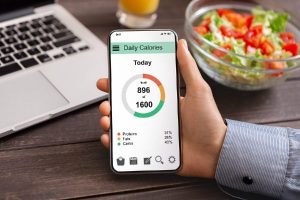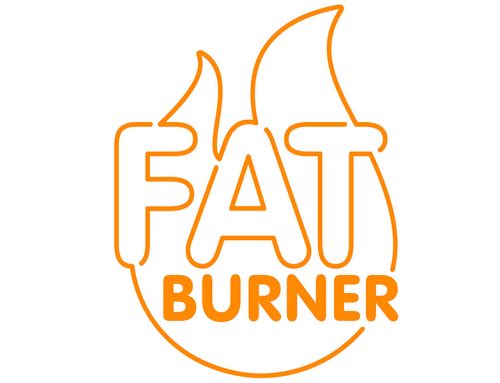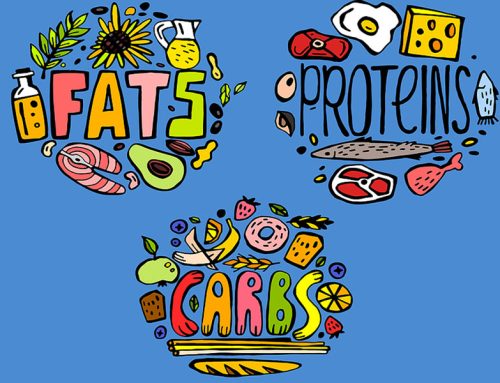I admit, sometimes I take certain nutrition facts for granted. Probably because I’m so close to this subject and I’ve been a coach and practitioner for years. I realized this a while back when I posted some articles referring to your “optimal daily calorie intake” but I didn’t explain how to figure that number out. I got tons of email and comments from readers letting me know! I guess I thought it was common knowledge, but surprisingly, it seems most people don’t know how many calories to eat, and to make matters worse, they get conflicting advice about how much to eat from various sources. Well, I’m here today to fix my oversight and bring us back to nutrition 101: How many calories should you eat?
Your “How Many Calories To Eat Cheat Sheet”

I’ve summed it all up into a “cheat sheet” below where you have your choice of getting a ballpark figure instantly (if you don’t like math) or getting a very precise estimate of your actual calorie needs (if you don’t mind crunching a few numbers). This is a page you’ll want to save and bookmark for reference.
Eating the right amount of calories to reach your goal whether that is burning fat or maintaining a healthy weight for life, doesn’t have to be complicated. In fact, it can become totally intuitive and unconscious fairly quickly if you understand a few basic principles of energy balance and rules of nutrition.
By putting yourself into a feedback loop and using results-based thinking, it’s even possible for calculating or counting calories to eventually become optional. All you need to do is acknowledge the energy balance equation, become aware of your portion sizes (eat mindfully) and then increase or decrease your portions based on your weekly results (or alternately, adjust your activity level to produce the calorie deficit you need).
But if you choose a non-calorie-counting approach, that doesn’t mean calories don’t count. I can’t emphasize enough the importance of maintaining a calorie deficit as an absolute requirement of cutting body fat. If you choose from a list of high-quality, nutrient-dense, unprocessed foods that are not highly calorie-dense, that can be a great way to automatically control calories. (Eat less processed food and you’ll usually eat fewer calories automatically).
However, I also believe there is nothing more helpful to your long term success than learning about your optimal calorie and macronutrient numbers in the early stages of your fitness and fat loss quest. If you try to wing-it, guesstimate your numbers or “intuitively eat” from day one, you may never “get it.” You could be shooting blindfolded for the rest of your life.
If you’re going to track nutrition numbers, calories are the most important number to learn about first, then after that, you can divvy up those calories into the macronutrient split (macros aka protein, carbs and fat), that you prefer. Here are four simple methods to calculate your caloric needs. Depending on whether you’re the analytical type or the “ballpark figure” type, select the method that suits your style the best.
1. The Averages Method
Use this method if you want a general ballpark estimate and you don’t like any math. These numbers are based on where, statistically, the majority of men and women will fall in the calorie needs bell curve.
For fat loss:
Men: 2100-2500 calories per day
Women: 1400-1800 calories per day
For maintenance:
Men: 2700-2900 calories per day
Women: 2000-2100 calories per day
NOTE: These are average numbers, so they’ll be reasonably accurate if your body size or activity level are average. If you’re a statistical “outlier”, ie, if you’re very small-framed and or very sedentary, your calorie needs will be in the lower end of these ranges (or even slightly lower). If you’re very large and or very active, your calories needs will be in the upper end of these ranges or even higher (even off the chart for certain types of athletes)
If you’re average in body size and activity, and if you were ever confused about calories, use this method and call it a day. For fat loss, the average female will eat 1600 per day give or take 100. The average male will eat 2300 per day give or take 100. Start there and adjust based on your actual week to week results. (After being in calorie deficit a while and losing some weight, most people need to reduce calories to continue losing fat at the same rate they did in the beginning).
2. The Quick Method
Use this formula if you want a personalized ballpark estimate with one quick calculation that at least accounts for your body size/weight. Use the lower number for lightly active, the middle number for moderately active and the higher number for very active.
Fat loss:
10 – 12 calories per lb. of bodyweight
Maintenance:
14 – 16 calories per lb. of bodyweight
3. The Harris Benedict Method
Use this formula for an accurate customized estimate of your maintenance level if you know your body weight but not your body fat percentage. For fat loss, create a 20-30% deficit below maintenance.
Note: BMR = basal metabolic rate, which is the amount of energy you require for normal body functions at rest (does not include activity).
Men: BMR = 66 + (13.7 X wt in kg) + (5 X ht in cm) – (6.8 X age in years)
Women: BMR = 655 + (9.6 X wt in kg) + (1.8 X ht in cm) – (4.7 X age in years)
Conversions:
1 inch = 2.54 cm.
1 kilogram = 2.2 lbs.
Example:
You are female
You are 30 yrs old
You are 5′ 6 ” tall (167.6 cm)
You weigh 120 lbs. (54.5 kilos)
Your BMR = 655 + 523 + 302 – 141 = 1339 calories/day
Now that you know your BMR, you can calculate your maintenance level, (also known as total daily energy expenditure or TDEE), by multiplying your BMR by your activity multiplier from the chart below:
Activity Multiplier:
Sedentary = BMR X 1.2 (little or no exercise, desk job)
Lightly active = BMR X 1.375 (light exercise/sports 1-3 days/wk)
Mod. active = BMR X 1.55 (moderate exercise/sports 3-5 days/wk)
Very active = BMR X 1.725 (hard exercise/sports 6-7 days/wk)
Extr. active = BMR X 1.9 (hard daily exercise/sports & physical job
Or 2X day training, i.e marathon, competition etc.)
Example:
Your BMR is 1339 calories per day
Your activity level is moderately active (work out 3-4 times per week)
Your activity factor is 1.55
Your TDEE = 1.55 X 1339 = 2075 calories/day
Burn the Fat Members: Click here for the interactive Harris-Benedict Online Calculator for women
Burn the Fat Members: Click here for the interactive Harris-Benedict Online calculator for men
4. The Katch McArdle Formula
Use this formula for an accurate customized estimate of your maintenance level if you know your body fat percentage and lean body mass. For fat loss, create a 20-30% deficit below maintenance.
BMR (men and women) = 370 + (21.6 X lean mass in kg)
Example:
You are female
You weigh 120 lbs. (54.5 kilos)
Your body fat percentage is 20% (24 lbs. fat, 96 lbs. lean)
Your lean mass is 96 lbs. (43.6 kilos)
Your BMR = 370 + (21.6 X 43.6) = 1312 calories
To determine TDEE from BMR, you simply multiply BMR by the activity multiplier:
Your BMR is 1312
Your activity level is moderately active (working out 3-4 times per week)
Your activity factor is 1.55
Your TDEE = 1.55 X 1312 = 2033 calories per day
Burn The Fat Members: Click here for the interactive Katch-Mcardle Online calculator (men and women)
Which Method is Right For You?
Depending on your disposition, you can either crunch numbers or you can take a “ballpark figure” type of approach. Either way, the goal is the same: You have to be in a calorie deficit to burn fat. I hope you found the flexibility offered from these different formulas helpful and it put the whole “calorie calculating thing” in perspective for you.
To Learn More
Burn The Fat, Feed The Muscle is the original “Bible of Fat Loss.: It’s based on bodybuilding, fitness and figure methods of achieving super-low body fat levels. It is a structured, by-the-numbers program designed for maximum precision. If you’re an accountant, engineer, or any other analytical or detail-oriented type (or a bodybuilder/physique athlete, of course), you will especially enjoy the calorie and macro-number oriented approach of Burn The Fat, Feed The Muscle (BFFM).
If you’re interested in how you can combine calorie counting and macro-based meal planning with a less-structured intuitive eating and mindful eating approach, learn more about my new book here: The BFFM Guide to Flexible Meal Planning For Fat Loss.
Until next time,
Train hard and expect success!
Tom Venuto,
Founder & CEO, Burn the Fat Inner Circle
Author of Burn the Fat, Feed the Muscle
Author of The BFFM Guide to Flexible Meal Planning For Fat Loss
PS. After I posted this article, I received a good question from a Burn the Fat reader that I thought was worth tacking on in a postscript:
QUESTION: “Tom, I heard (from both pub-med indexed studies and from well-read experts that the Mifflin-StJeor formula was the most accurate BMR calculator. Is that not true?”
ANSWER: It actually might be true. Sometimes different calorie formulas are developed for certain populations, much the same way as body fat regression equations are developed for certain populations. That includes different ages, races, genders and athletic statuses. I also know some trainers and nutritionists who recommend the Owen equation as well, above the Mifflin equation or the two I discussed in my post.
Here’s the thing: I can give you a pro and con list for every single formula out there – some don’t factor in age, some don’t factor in gender, some don’t factor in athletic status and some don’t factor in activity level at all – such as the quick formula, and that one is used very widely. What I do know is that the Katch McArdle and the Harris Benedict (as ancient as it is) formulas are good enough and then some, and I have used them for 25 years across broad populations of clients whose results I have tracked for months and they are close enough to do the job perfectly on a practical level.
For that reason, worrying about which formula is the absolute best is just nit-picking, considering these are estimations anyway. The activity factor to calculate maintenance level (TDEE) from BMR is totally an estimation, so all things considered, all we are trying to accomplish here is get as accurate an estimate as possible to establish a baseline.
In my Burn the Fat, Feed the Muscle program, I use a method called the FEEDBACK LOOP SYSTEM, which means that once you have established that initial baseline, you are finished with formulas anyway. You have gone from theory to practice, so at that point you should adjust your calories not based on theoretical (on paper) calculations, but on actual (real world) results on a week-to-week basis.
So the bottom line is, if you know for certain that a specific calorie/metabolism formula applies to your demographic group, you could certainly favor that one, but in the bigger scheme of things, worrying about which calorie formula is absolutely most accurate is splitting hairs and no one should lose sleep over it.






Thanks for the insight Tom. I hate to admit it, but I am ballpark kind of guy. One thing: as we age, the numbers decrease slightly unless we actively try to replace the natural loss of muscle mass. For me, a male at age 56, I think about 1800 calories a day plus an hour of mild aerobic exercise insures weight loss.
Although I think it’s interesting to be able to do these calculations I’m not sure how important it is. I lost over 60lbs a couple of years ago by making sure my daily calorie deficit was at least 1000Kcal. As my weight at the time had been stable I didn’t feel the need to work out what I needed but rather what I should reduce. By combining a moderate diet with exercise I managed my 7000+ Kcal weekly deficit fairly painlessly. That amounts to about a 2lb loss per week and I reached my target weight in about 6 months. In fact I had to start increasing my calorie intake at that point because I continued to lose weight and I needed to start bulking up for my weight training. :)
Mike, in agreement with what you’re saying, whats important always – for weight loss – is to achieve a calorie deficit. Whether you actually calculate your numbers and achieve your deficit, or you guess and achieve your deficit, the end result is the same. When it’s MOST important to get serious about crunching numbers is when a person is stuck at a plateau and getting no results (because most people are guessing wrong). Its also important – ideal, in my opinion – for beginners to start out doing their calculations to get an education on calories – as well as protein, carbs and fat. After doing it by the numbers for a while it becomes automatic – you can become “unconscious competent” – and its no longer as important to count weight and measure all the time. I see counting, weighing and measuring as and educational tool not something that is a requirement for life. For example, at the moment, im not counting anything. Im just using the “feedback” method and paying attention to the portion sizes and paying attention to the results in my body each week and adjusting accordingly. Good nutrition simply becomes lifestyle after a while. The counting and tracking in the beginning helps you establish that lifestyle as habit. Should I compete again, i would surely break out the calculators, spreadsheets and food scale again. I could do that by feel as well, but competition is an other time that many athletes find doing it by the numbers important… and helpful.
Thank you for the expanded information which is very helpful. Using your book and the food list, I understand the general idea and try to eat clean most of the time. However, I am always confused when I eat food I cook from scratch. I can weigh four ounces of chicken or steak, make a salad, and add a vegetable from the list – this becomes dinner. But how do I know how many calories I am eating? Right now, I am boiling a chicken to make chicken salads for lunches next week, but I really have no clue how many calories I will end up with in the final product. If I buy something already prepared, of course that info is on the label, but I am developing the habit of not eating prepared foods. What to do?
Hello Angela, as Tom always says, these are all estimates to direct you into the right direction, you can have an estimate on the total amount of calories that a chicken breast has by checking(on the internet or any other source)how many calories per gram(or ounce) it has, then you just have to get a food scale and determine the weight and multiply the calories per gram (or ounce whatever you use)by the weight of your portion and you will know the number of calories that your portion has, do the same with the rest of the elements of your meal and their corespondent calorie value and add everything up, oil, sauces, dressing etc. this should give you a fair estimate on your calorie intake that you can modify if necessary after you weekly measurements where you will know if you’re heading in the right direction. I hope that helps!
Regards.
I just don’t get it. I’m 6’1 288 lbs. very excited to begin the workout plan. And nutrition plan. But I’m suppose to eat almost 4800 calories a day! How do I burn that off??
Hey Shawn – check your numbers again. I just did mine using 3 of the methods and got around the same number. If you use the quick method for weight loss for yourself at 288 lbs you end up with 288 * 10 = 2880 calories per day (using the low end of the range for fat loss).